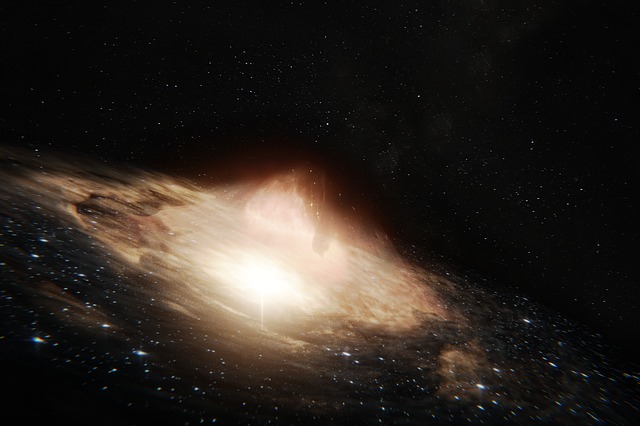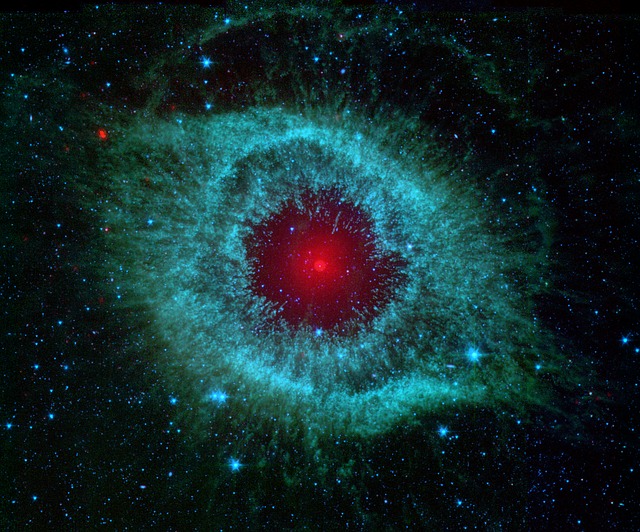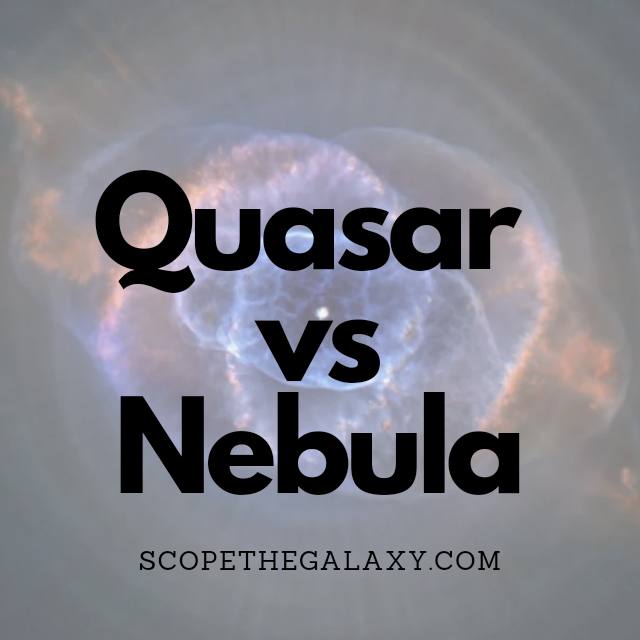*This post may contain affiliate links. This means we may make a commission if you purchase an item using one of our links*
The main difference between the two is that a nebula is a large cluster of dust clouds and gases formed after a star dies whereas Quasars are found around the accretion disc of a supermassive black hole, are amongst the brightest and amongst hottest celestial objects in the known universe.
Nebulae and quasars differ in a variety of other ways also so, continue reading for more a detailed look on these celestial bodies and the other differences between them.
What Is A Quasar?
Table of Contents

Quasars are extremely bright celestial objects powered by supermassive black holes, found in the center of galaxies. They tend to also be referred to as an active galactic nucleus or AGN for short.
Quasars were initially called quasi-stellar radio sources however, this name isn’t entirely consistent with the type of waves they generate as only around 10 percent of all quasars that have been discovered produce strong radio waves.
As for how bright they can be, quasars have been observed to exceed levels that are upwards of 100 times the brightness of the galaxies that hold them.
Although not an absolute, many scientists believe these bright objects are formed when light escapes at the edge of a supermassive black hole just before reaching its event horizon. Some light gets drawn in whilst other particles jet out at a tremendous pace, which is how the erratic and powerful light of a quasar forms.
At this moment in time we have discovered roughly 750,000 unique quasars extending across various ages, with the farthest from us roughly 13 billion light years away.
Therefore, not only are these enigma’s extraordinarily powerful but, they can even be used as time capsules to observe how our universe came to be, relatively close to when the theorised big bang occurred.
What Is A Nebula?

A nebula is a giant gas and dust cloud which can be observed in outer space. They are either present when forming new stars or when a supernova explosion occurs, leaving behind this dust cloud remnant.
There are other less violent ways nebulae are formed but, in most instances they form once a star is about to die.
Just like the components of their dead star counterparts these dust clouds will be made out of the elements hydrogen, helium and a number of other ionized elements spread across their local region of space.
Therefore, based on this fact and how stars are mostly comprised of those two core elements, stars can be formed when dust cloud surroundings clump together.
When stars are being formed, the dust clouds will start to clump together, making the gravity around these regions stronger and drawing even more dust clouds towards itself.
This process essentially occurs until the gravity becomes so intense that it causes the clumped dust clouds to collapse into itself.
The dust in the center will star heating up producing the first phase of a new star, called a protostar and from there will become either a main sequence star like red dwarfs, yellow dwarfs (like our Sun) among other variations.
They can also become a failed brown dwarf star too if everything doesn’t go to plan.
Nebulae don’t live for an extreme amount of time in space where planetary nebulae like the helix nebula for example is projected to last for around 20,000 years near its top end.
How Are Quasars And Nebulae Similar?
Both entities are made up of similar matter where hydrogen is a primary component of their matter along with helium among other forms of dust and ionized elements.
Besides this major similarity the two are significantly different from one another.
Differences Between A Quasar And Nebula
As for the differences between quasars and nebulae, they include the following:
- Quasars on average can last for around 10 million years whilst a nebula tends to last anywhere from 20,000 to the oldest recorded nebula NGC 2070, 20+ million years.
- Quasars are far brighter than even the brightest nebulae. In fact quasars are often regarded as the brightest cosmic entities in the universe.
- Nebulae form when stars die whilst quasars utilize the materials around a supermassive black hole at the center of galaxies to form.
- There are roughly 750,000 quasars that have been observed whereas the Milky Way alone is said to have 20,000 nebulae so the number here is significantly larger than quasars which require supermassive black holes to form.
- Quasars can be 100+ billion degrees Celsius whilst nebulae may reach 200,000 degrees Celsius at their upper end.
- Nebulae can use the dust cloud particles within its region to create new stars whilst quasars cannot.
- Nebulae like the Tarantula nebula can be 1,800 light years wide whilst the largest black hole is only 126 billion km in width. Even if the quasars width spanned many times this it still wouldn’t hold a candle to the Tarantula nebula’s size.
Summary
Quasars are the brightest celestial objects in our universe that surround supermassive black holes whereas nebula are both the beginning and the end of the life cycle of a star.
Although both are composed of similar elements, they differ significantly in the amount of power they produce, their luminosity and even their size.

